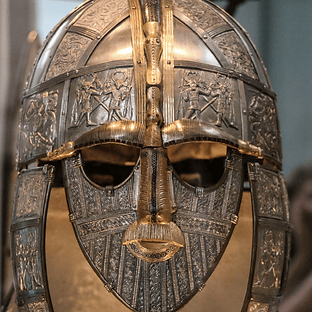

ST THOMAS
CE PRIMARY SCHOOL
.png)
YEAr 4





Our Topic this term is: Invasion
We will be learning about Invaders in our topic. Our curriculum takes the form of mini projects which really allows us to look at the subject in depth. This topic takes us from the Romans to the Vikings and then to the Anglo-Saxons. We hope the children will be captivated by the challenges of the mini projects and are looking forward to our new topic.

These activities are for you to do at home with an adult. You can do all of them or choose the ones that you find most interesting.
Creative & Imaginative
-
Design a Shield: Research Anglo-Saxon or Viking shield patterns and create your own on paper or cardboard. Write a few sentences about what your design represents.
-
Runic Writing: Write your name or a secret message using Viking runes. Decorate it with Anglo-Saxon style borders.
-
Be a Storyteller: Write a short myth, legend, or saga in the style of the Anglo-Saxons or Vikings (e.g., inspired by Beowulf or Norse myths).
History & Research
-
Anglo-Saxon Village Life: Draw and label a picture of an Anglo-Saxon village, showing different buildings (hall, huts, church, fields).
-
Viking Longships: Research Viking longships and create a fact sheet or a small 3D model using recycling materials.
-
Anglo-Saxon Jobs: Choose one job (e.g., blacksmith, farmer, monk) and write a diary entry from their point of view.
Practical & Hands-On
-
Food of the Past: Find out what Anglo-Saxons or Vikings ate and try cooking (with an adult) a simple recipe like bread or porridge. Write about how it tastes!
-
Make a Brooch: Use foil, card, or clay to design an Anglo-Saxon brooch and explain what materials real ones were made from.
-
Weaving Craft: Try simple weaving with paper strips to mimic Anglo-Saxon and Viking textiles.
Cross-Curricular Links
-
Maths – Viking Numbers: Learn how to write numbers 1–10 in runes, then solve some simple sums using them.
-
Geography – Where Did They Come From?: Draw a map of Europe showing where the Anglo-Saxons and Vikings came from, and where they settled in Britain.
-
Music – Battle Chant: Create a short chant or rhythm that Anglo-Saxon or Viking warriors might have used to prepare for battle.




Maths
In Maths, we will move onto working on to methods of Multiplication and Division, doing this both mentally and using more formal written methods. This will be an important area of Maths for the children and we will be working hard on learning the tables they do not know. By now most should be fluent with 2,3,4,5,8 and 10 times tables. Now, we will work on learning the 6,7,9,11 and 12 times tables. It is of particular importance for children to practise their times tables on TTRockstars regularly, especially the soundchecks which reflect the Multiplication Check that all Year 4 pupils nationally complete towards the end of Year 4.
The link to their site with home learning and advice on can be found here:
https://whiterosemaths.com/advice-and-guidance
Here is an overview of the year.
Reading & Writing
In English, we will be reading Beowulf by Michael Morpurgo with the aim of writing a newspaper report.
Reading books should be in school every day but will be changed on a Friday.
RHSE
In RSHE, we will be learning about how to treat each other with respect, considering the challenges that different people face and how we can make it easier for them.
Science
In Science, we will be studying Food and the digestive system. They explore the main parts, starting with the mouth and teeth, identifying teeth types and their functions. They link this learning to animals' diets and construct food chains to show the flow of energy.
Music
We will continue to use our music platform, Charanga, which the children seem to be thoroughly enjoying. This half term, we will learn how to play the glockenspiel. We will be learning musical notation and composing our own music using the notes D E and F
PE
This half term we will be teaching the children the strike, react, rally and Look, run, avoid from our Beyond the Physical scheme; they will need to come in their P.E. kits on Tuesdays and Fridays.
Design and Technology
In Design and Technology, we will be learning all about fresh and healthy foods. We will looking at what the packaging of food can tell us such as expiration date and nutritional values. We will also design our own packaged healthy snack.
Art and Design
In Art and Design we will be studying warm and cool colours. We will look at how to mix these colours and their usage in different pieces of art before creating our own aboriginal designs. In the second half of the term we will be practicing our weaving skills and create an Anglo-Saxons inspired wall hanging.
Homework
Homework:
Reading books are changed weekly, every Friday. Home readers should be returned on a Thursday so there is time to sort new books
Times table worksheet goes home every Friday and should be returned on Monday
On seesaw we have the kahoot quiz and spellings
Please contact us if you have any problems accessing or completing homework
Library will be on a Monday
PE will be Tuesdays and Fridays

Here is your Year 4 Class Charter challenge sheet. You can also download a copy by clicking on the image.
